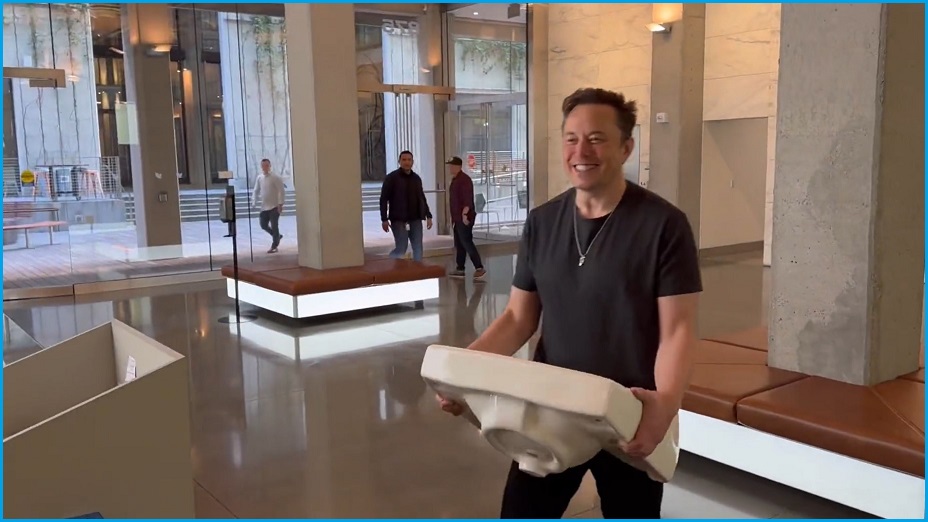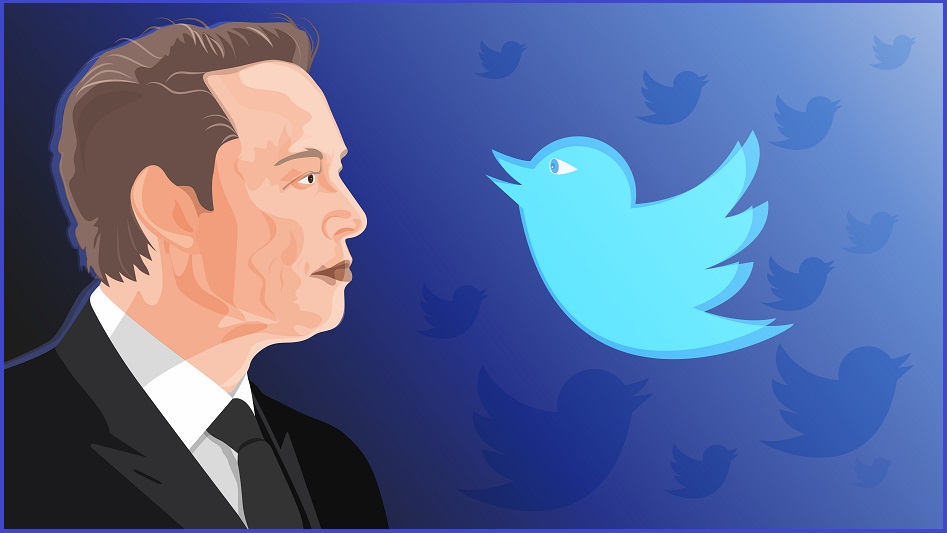Since taking over Twitter at the start of this month, the world’s richest man Elon Musk has alienated advertisers, halved the company’s workforce, instituted a failed subscription scheme, ended a permanent work-from-home policy, and overseen a technological decay that has made the platform buggy and unreliable.
The unpredictability of Musk’s management is playing out in real-time, turning Twitter into the internet’s greatest spectacle as a growing number of users watch on to see if Musk's Twitter takes off or detonates on the launch pad.
Within days of walking into Twitter's San Franscico office brandishing a sink, he sacked around half of the company's roughly 7,500 employees.
Staff were unceremoniously locked out of their laptops and work accounts in a spate of mass firings that took out core engineering teams and wiped out parts of the company focused on accessibility, ethics, and content moderation.
A handful of employees were asked to come back because of their specific areas of expertise, especially for developing mobile apps.
Leaked Slack screenshots showed a senior Twitter manager saying it was undesirable to bring back those engineers because they were “weak, lazy, unmotivated” and that they were to be treated as temporary staff, simply “to be around until the knowledge transition is completed”.

Is it sink or swim for Elon Musk's Twitter? Elon's going with sink... Photo: Twitter
Many remaining staff have been vocal about their distrust of Musk, publicly calling out their new boss on Twitter, of course.
Android developer Eric Frohnhoefer got in the weeds with Musk after he complained the app was running “super slow in many countries” because it used more than “1,000 poorly batched RPCs [remote procedure calls] just to render a home timeline”.
Frohnhoefer was one of many people to say Musk was wrong about his diagnosis of RPCs as a problem, and calmly offered a few alternate explanations as to why the Twitter apps might be running slowly.
Then he was fired.
Other staff who have criticised Musk on internal Slack channels have been let go for violations of a “company policy” that doesn't appear to exist.
Musk tweeted an insincere apology “for firing these geniuses” and sarcastically said “their immense talent will no doubt be of great use elsewhere” and replied to a post about another engineer who was fired saying they had “a tragic case of adult onset Tourette’s”.
Go hardcore or go home
Late last week, Musk attended a town hall session with his staff in which he answered questions about the company's future, said that bankruptcy was “not out of the question”, and spoke of big plans to turn Twitter into a payments platform.
When asked how he planned to deal with the company’s high employee turnover and what Musk would do to “really bring people together and get everyone focused on the big vision”, he described a high pressure work environment.
“Philosophically, what works at SpaceX and Tesla is people being in the office and being hardcore, and a small number of people can get a tremendous amount done in that situation,” Musk said.
“I’m a big believer that a small number of exceptional people can be highly motivated and can do better than a large number of people who are pretty good and moderately motivated.”
This “hardcore” philosophy was immediately evident when Musk demanded a new verification subscription model be implemented in a few short days or else the engineering team responsible would be fired.
Musk called for an end to Twitter’s “current lords and peasants system for who has or doesn’t have a blue checkmark”.
He got his wish. Anyone with $US8 – it ended up being around $12 for Australians – could pay to have a highly sought-after blue verification tick next to their username.
Prior to Musk taking the reins, verification was done sparingly for prominent users like political figures, journalists, and brand accounts to ensure a level of authenticity for high-profile accounts.
Chaos ensued the moment the moment Twitter flicked the switch on its paid-for verification feature as people immediately began impersonating Musk, celebrities, and brands.
One verified prankster impersonating pharmaceutical company Eli Lilly, which profits from selling insulin at vastly inflated prices, sent a viral tweet saying it would make insulin free.
The real Eli Lilly account apologised for the “misleading message”, its share price then took a four per cent hit, and executives yanked all advertising on Twitter.
Musk soon killed the verification subscription but has said it will return after some re-tooling.
Going “hardcore” also led to Musk turning off what he described as “microservices bloatware” of which “less than 20 per cent are actually needed for Twitter to work,” he tweeted.
Within hours, warnings spread around Twitter for people not to log out if they have two-factor authentication on their accounts.
The service for sending authentication codes via text message, it turned out, was one of those “bloatware” microservices.










